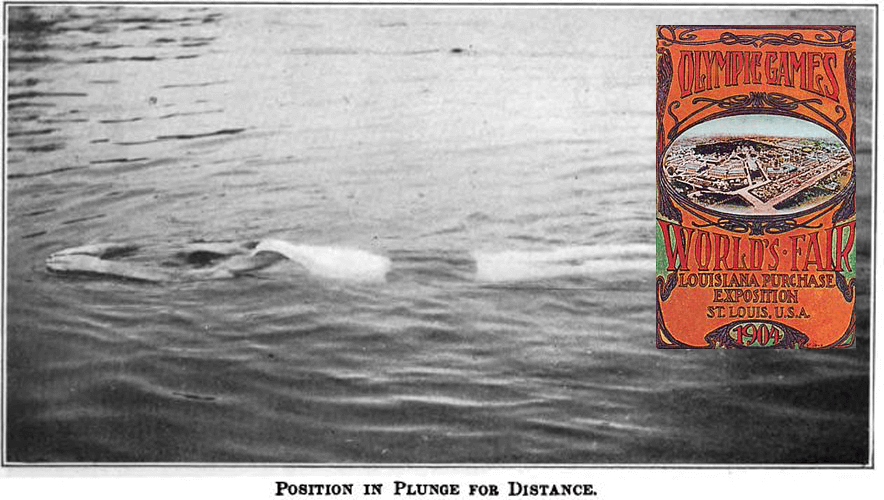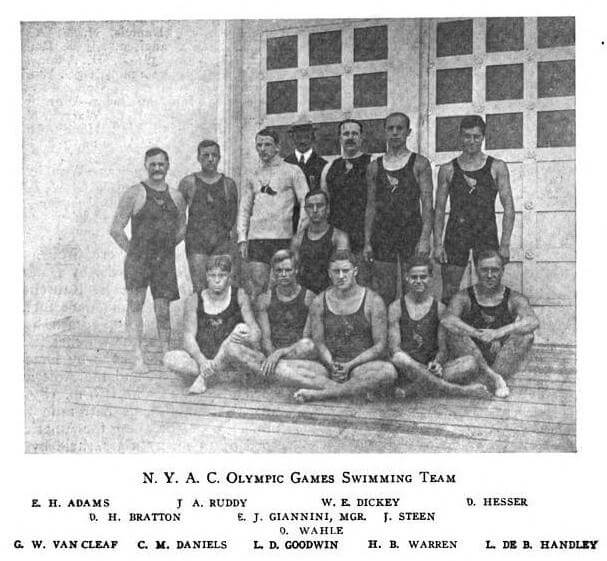The Olympic Event That Almost Was: The Plunge

By Zach Breeding, Swimming World College Intern.
A vast majority of the general public is aware of the four basic strokes in swimming and have a general idea of how each of them are done (which they love to demonstrate when asking swimmers about the sport). Swimmers, in comparison, are painfully aware of the minutiae of each stroke.
However, there is a remote part of swimming history that both the layman and I would bet almost all swimmers are completely unaware of: The Plunge for Distance, or “the plunge,” for short.
A Brief History of Swimming:
Competitive swimming emerged around 1830 in England with regular competitions being held by the year 1837. And then in 1867 the Amateur Swim Association was founded and to this day remains a very active organization.
At the advent of competitive swimming breaststroke was the most common method of moving through the water for the British as it was seen as more formal and allowed one to keep their head above the water. However, in 1873 the front crawl (or freestyle as it is called now) was introduced formally and quickly became the only method of swimming as it was much faster.
The other three strokes came in subsequent years as the sport advanced with backstroke being officially swum at the Olympics in 1900, and breaststroke being phased back in with its very own event at the Olympics in 1904. The final of the four, butterfly, made its Olympic debut in 1956. But there exists a fifth Olympic swim technique that made its mark on the world and just as quickly vanished.
The Plunge:
The Plunge was an event in early swimming history that reached its peak popularity in the late 19th and early 20th century. it was defined by the American Swim Association as “a dive from a stationary take-off which is free from spring from a height of 18 inches above the water. Upon reaching the water the plunger glides face downward for a period of 60 seconds without imparting any propulsion to the body from the arms and legs.” The distance from the furthest extended part of the swimmers body back to the start was then measured and a winner was determined.
The plunge became so popular that it ended up being its very own event and was featured at the 1904 Olympic games in St Louis. The winner of that event was American William Dickey travelling a distance of 62 feet and six inches. America in fact dominated that event taking all three medal places and sweeping the rest of the event. This was likely because there were only five entries and all of them were from the New York Athletic Club. This Olympic record however was mere mince-meat compared to the world record of 79 feet three inches set by an Englishman in 1902. The event, despite the fact that it was at the Olympics, was not favored by many in the swimming community.

Photo Courtesy: Wiki Commons
The main reason for the removal of this very polarizing event (as it was loved by those who competed in it) was that many in the community and sports world in general found that the event was “not athletic at all.” This among other things written by New York Times sports writer John Kiernan summarized the general consensus of the public concluding that the event favored “mere mountains of fat who fall in the water more or less successfully and depend upon inertia to get their points for them”. The event was also ridiculed for being too slow and uninteresting, being compared icebergs in the ship lane by the same author.
Because of these insults from the public and the massive failure that was the events’ debut in the 1904 Olympics it was never seen on the world stage again and quickly faded into obscurity and forgotten history. By 1917 it had barely survived many attempts from many organizations to be banished, then in 1925 the NCAA removed it from its official list, and finally as the plunges death rattle, its last official championship was held in England in 1937.
The history of the plunge, while short was also rich with records, drama, and even an Olympic appearance. And in the end isn’t that all that any swimmer asks for?
All commentaries are the opinion of the author and do not necessarily reflect the views of Swimming World Magazine nor its staff.




When I attended high school in England 1950 t0 1953 the Plunge was one of our competitions.